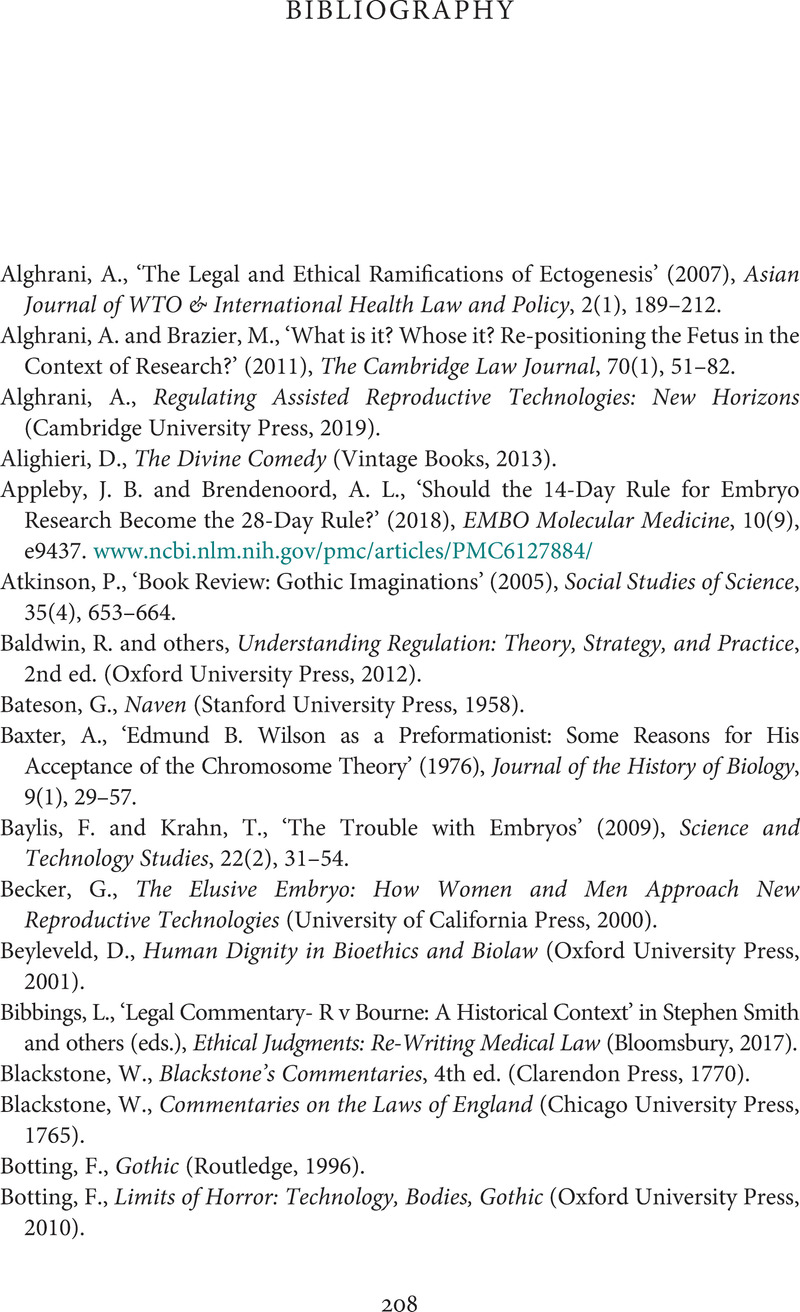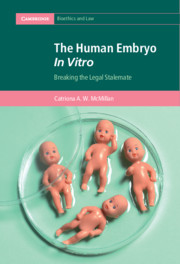Book contents
- The Human Embryo In Vitro
- Cambridge Bioethics and Law
- The Human Embryo In Vitro
- Copyright page
- Dedication
- Contents
- Foreword
- Acknowledgements
- Table of Cases
- Table of Legislation
- Abbreviations
- Introduction
- Part I Into Liminality
- Part II Through Liminality
- Part III Out of Liminality
- Bibliography
- Index
- References
Bibliography
Published online by Cambridge University Press: 18 March 2021
- The Human Embryo In Vitro
- Cambridge Bioethics and Law
- The Human Embryo In Vitro
- Copyright page
- Dedication
- Contents
- Foreword
- Acknowledgements
- Table of Cases
- Table of Legislation
- Abbreviations
- Introduction
- Part I Into Liminality
- Part II Through Liminality
- Part III Out of Liminality
- Bibliography
- Index
- References
Summary

- Type
- Chapter
- Information
- The Human Embryo In VitroBreaking the Legal Stalemate, pp. 208 - 217Publisher: Cambridge University PressPrint publication year: 2021



